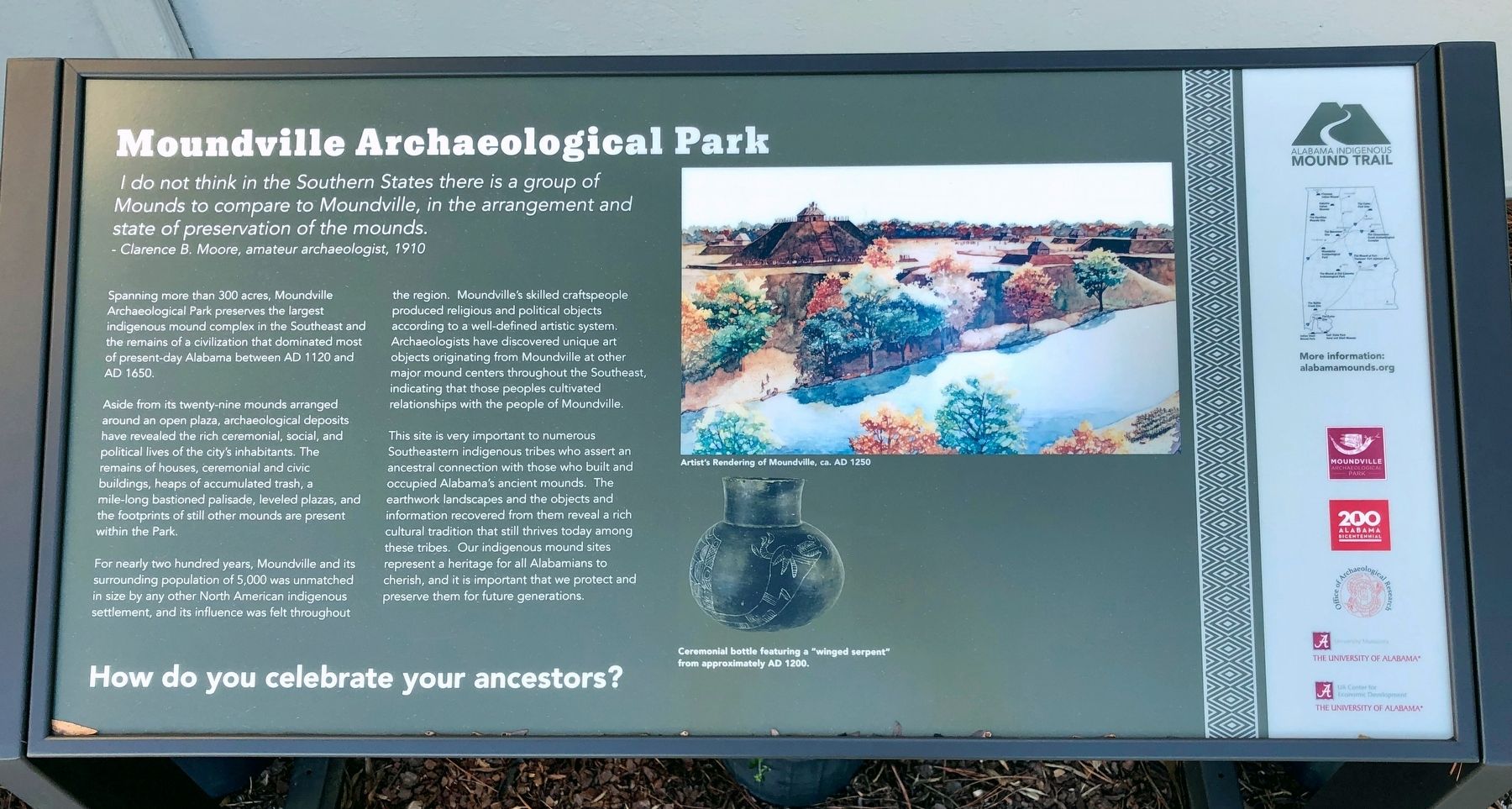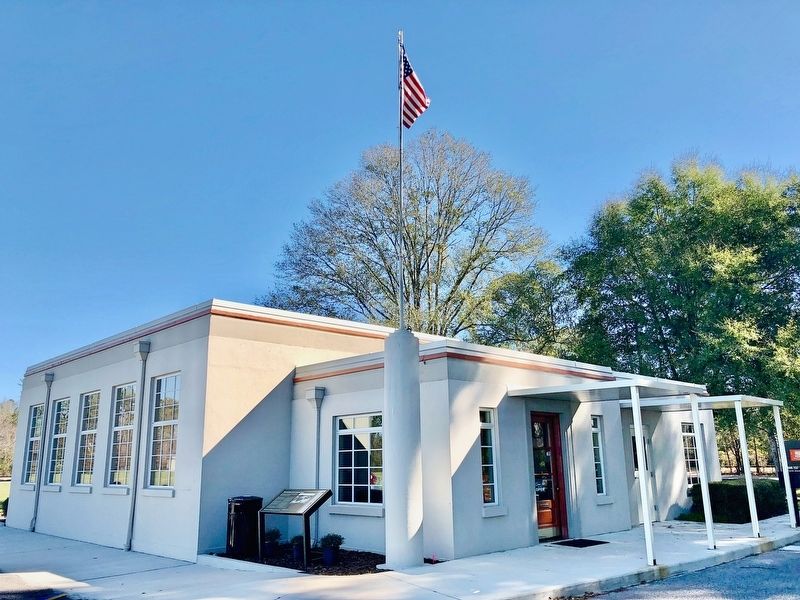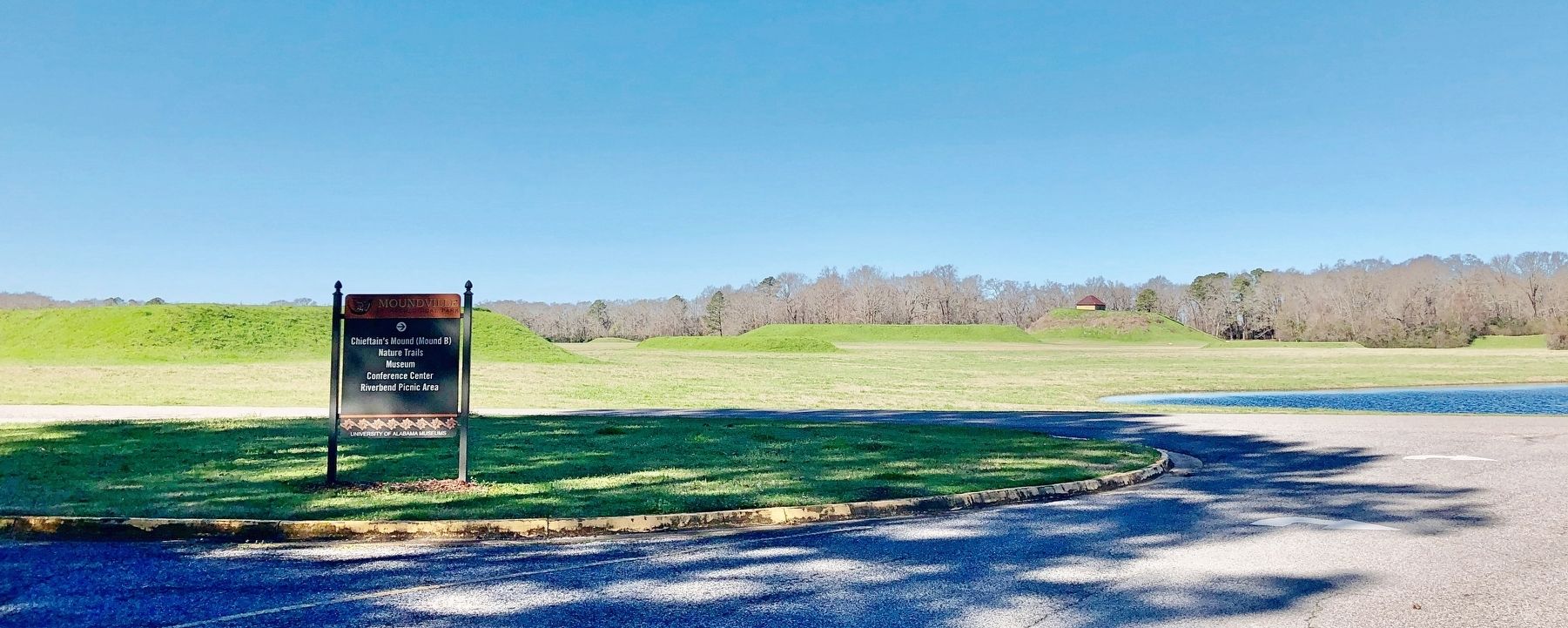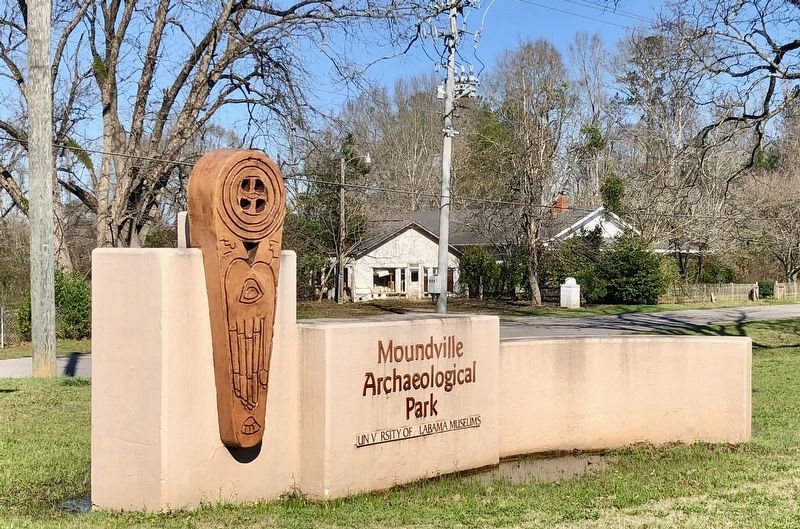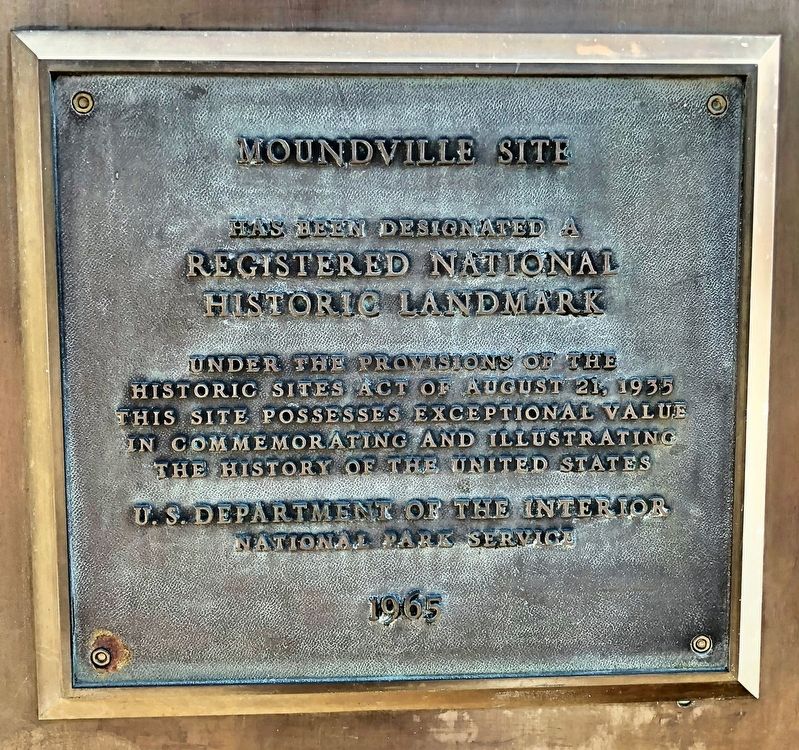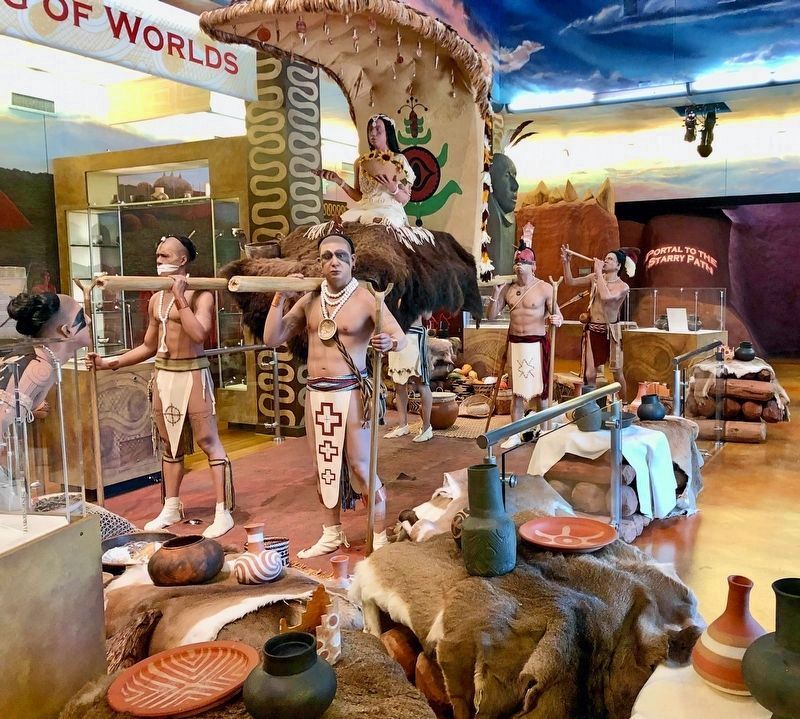Moundville Archaeological Park
Alabama Indigenous Mound Trail
I do not think in the Southern States there is a group of Mounds to compare to Moundville, in the arrangement and state of preservation of the mounds.
- Clarence B. Moore, amateur archaeologist, 1910
Spanning more than 300 acres, Moundville Archaeological Park preserves the largest indigenous mound complex in the Southeast and the remains of a civilization that dominated most of present-day Alabama between AD 1120 and AD 1650.
Aside from its twenty-nine mounds arranged around an open plaza, archaeological deposits have revealed the rich ceremonial, social, and political lives of the city's inhabitants. The remains of houses, ceremonial and civic buildings, heaps of accumulated trash, a mile-long bastioned palisade, leveled plazas, and the footprints of still other mounds are present within the Park.
For nearly two hundred years, Moundville and its surrounding population of 5,000 was unmatched in size by any other North American indigenous settlement, and its influence was felt throughout the region. Moundville's skilled craftspeople produced religious and political objects according to a well-defined artistic system. Archaeologists have discovered unique art objects originating from Moundville at other major mound centers throughout the Southeast, indicating that those peoples cultivated
relationships with the people of Moundville.This site is very important to numerous Southeastern indigenous tribes who assert an ancestral connection with those who built and occupied Alabama’s ancient mounds. The earthwork landscapes and the objects and information recovered from them reveal a rich cultural tradition that still thrives today among these tribes. Our indigenous mound sites represent a heritage for all Alabamians to cherish, and it is important that we protect and preserve them for future generations.
How do you celebrate your ancestors?
Erected 2019 by Moundville Archaeological Park, Alabama Historical Commission, the University of Alabama Center for Economic Development, the University of Alabama Museums.
Topics and series. This historical marker is listed in these topic lists: Anthropology & Archaeology • Native Americans • Parks & Recreational Areas • Settlements & Settlers. In addition, it is included in the Alabama Historical Commission, and the National Historic Landmarks series lists. A significant historical year for this entry is 1910.
Location. 33° 0.165′ N, 87° 37.689′ W. Marker is in Moundville, Alabama, in Hale County. Marker is on Mound Parkway, 0.6 miles west of Alabama Route 69, on the right when
Other nearby markers. At least 8 other markers are within walking distance of this marker. A different marker also named Moundville Archaeological Park (within shouting distance of this marker); Politics and Power (approx. 0.3 miles away); Mound B (approx. 0.4 miles away); a different marker also named Politics and Power (approx. 0.4 miles away); Earthlodge (approx. 0.4 miles away); Mound Arrangement (approx. 0.4 miles away); A Perspective of Power (approx. 0.4 miles away); The CCC and Moundville (approx. half a mile away). Touch for a list and map of all markers in Moundville.
More about this marker. There is a fee charged for entry to the park.
Also see . . . Wikipedia article on the Moundville Archaeological Park. (Submitted on January 19, 2020, by Mark Hilton of Montgomery, Alabama.)
Credits. This page was last revised on June 1, 2020. It was originally submitted on January 19, 2020, by Mark Hilton of Montgomery, Alabama. This page has been viewed 290 times since then and 30 times this year. Photos: 1, 2, 3, 4, 5. submitted on January 19, 2020, by Mark Hilton of Montgomery, Alabama. 6, 7. submitted on January 20, 2020, by Mark Hilton of Montgomery, Alabama.
